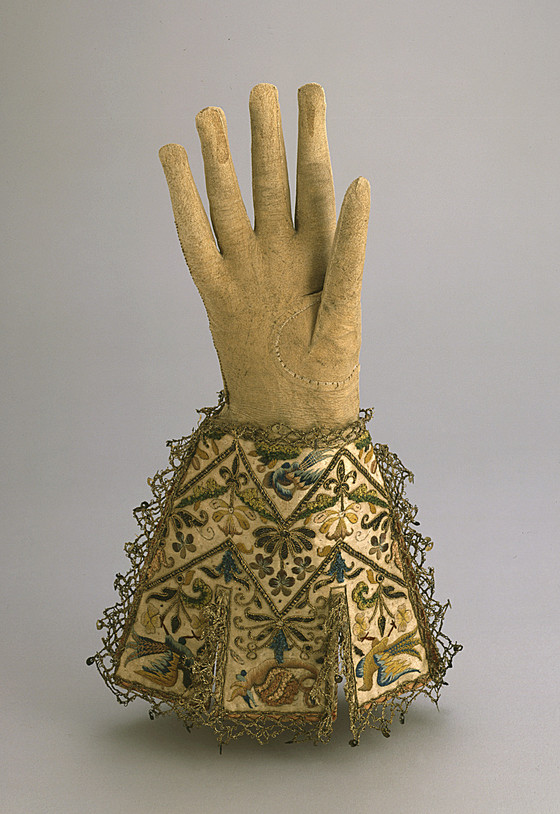Pair of Man's Gauntlets

Please log in to add this item to your gallery.
View comments
No comments have been posted yet.
Add a comment
Please log in to add comments.
Please log in to add tags.
* Nearly 20,000 images of artworks the museum believes to be in the public domain are available to download on this site.
Other images may be protected by copyright and other intellectual property rights.
By using any of these images you agree to LACMA's Terms of Use.
Pair of Man's Gauntlets
England, circa 1625-1650
Costumes; !Accessory
Leather, silk and gold metallic thread, silk satin; looped bullion embroidery
14 1/4 × 7 3/4 in. (36.2 × 19.69 cm)
Gift of Mrs. Margaret Isabel Fairfax MacKnight (49.45.1a-b)
Not currently on public view


